NOLA's Dancing Lady
The Dancing Lady—a.k.a. Jennifer Jones—is a musician, teacher, fashion designer, philosopher, paralegal, booking agent, shaman, and dancer with moves festival goers have never seen and way more than her fans even know about.
"My joy is seeing average people who want to dance with me," says Jennifer Jones, known to many as "The Dancing Lady."
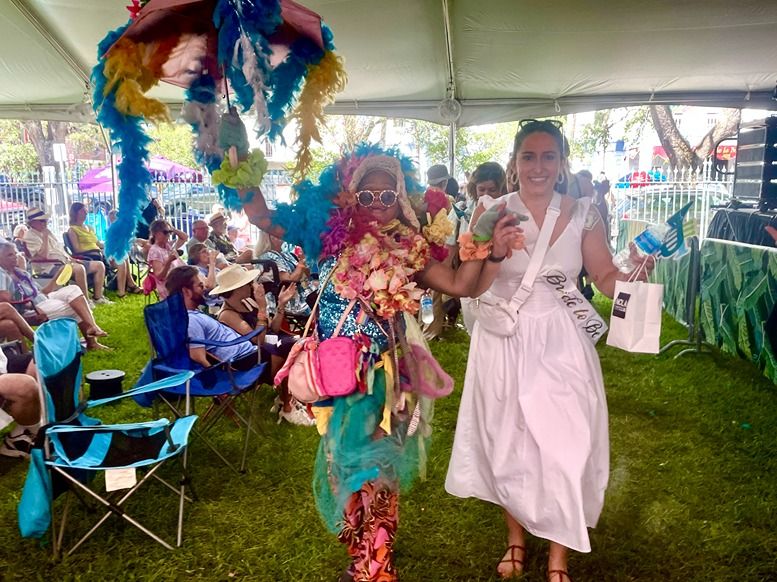
Jennifer Jones is the person beneath a flurry of vibrantly colored fabric with sparkling umbrellas, seen bopping around with twirls and high kicks at festivals, parades, and concerts throughout New Orleans. Although she cuts a rug on grassy fields, dirt lots, and paved streets, she is not the attention-seeking party animal her antics suggest. Her persistent smile and boundless energy belies the sharp mind of an eminently accomplished woman. Her passion for dance is deeply rooted in her love for her family, her city, and a spiritual calling to heal the world the best way she knows how—through dance.
WE ARE FAMILY
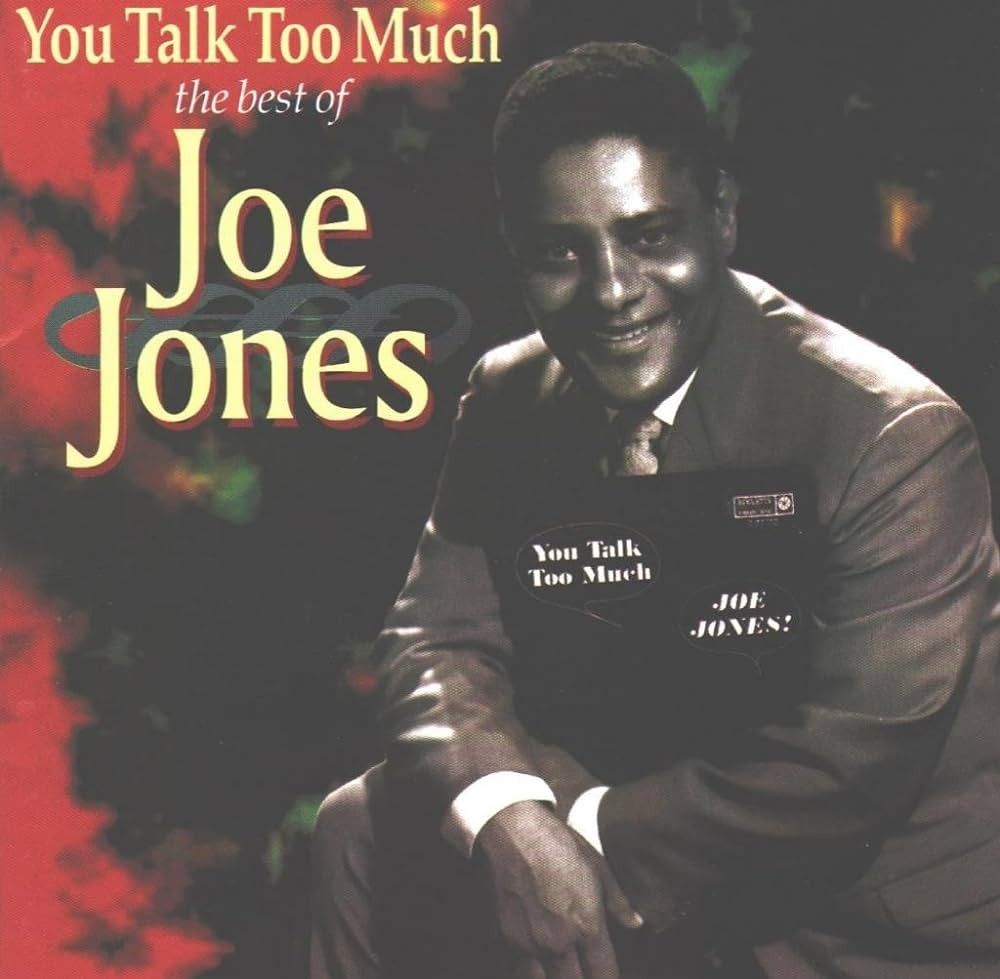
Jennifer's father, Joe Jones, was a New Orleans musician best known for his 1960 hit song "You Talk Too Much."
"He worked with all the greats: Fats Domino, Little Richard, Ernie K-Doe, Aaron Neville, and managed the Dixie Cups," Jones says. "Mom was the 'Queen of Everything,' as B.B. King would attest. They all stayed at our house because [African Americans] couldn't stay at hotels. Our living room was the front row," she recalled. "I was always dancing."
Creativity permeated the Jones family. Jones remembers her grandmother being a dancer, and her mother, who was also one, taught her how to dance. Her mother was also a skilled clothing and interior designer. "Mardi Gras Indians would tour with the Dixie Cups, and my mom did embellishments on the outfits." Jones credits her extravagant costumes on her mother's influence, working on looms, arts, and crafts. "She encouraged creativity, but we were not to miss school."
Jones is a product of her Seventh Ward childhood. "The People were it's highest commodity—Christianity and all of the New Orleans and Creole sensibilities: lifestyle, food, culture, tradition and Joie de vivre," she recounts. "It was simply the best place to grow up."
TEACH YOUR CHILDREN WELL
Dance Theatre of Harlem Founder Arthur Mitchell recruited Jones to study at Clark University in Massachusetts, but her mother feared for Jones' safety during Boston's desegregation busing crisis. Jones' father had since moved to Los Angeles to work in music publishing to protect the rights of R&B performers, so she followed him west.
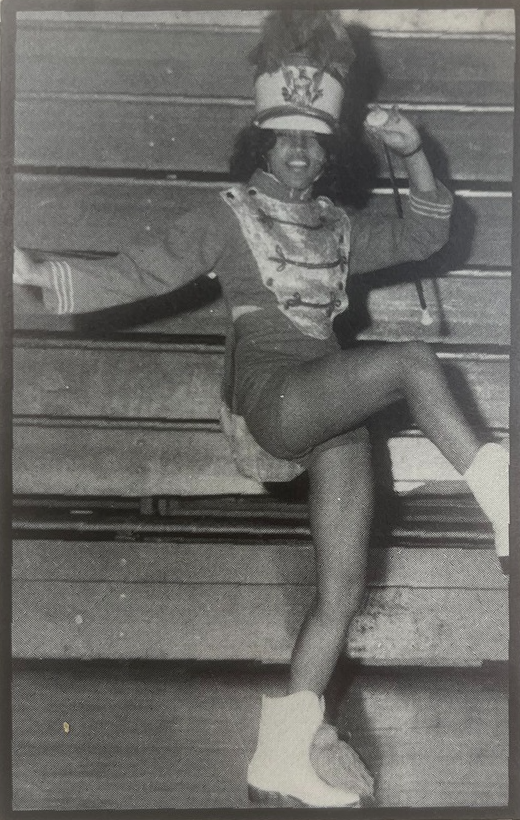
Jones studied theater at Los Angeles Valley College under Richard Pryor-collaborator and Shreveport-native Paul Mooney. She also assisted in her father's business by drawing up contracts, working as a paralegal, and as a de facto booking agent on his behalf. Jones also attended many events in her father's place and was quickly becoming the face of his business. Jones realized she was being groomed to take over his business, but she was unable to ignore her calling as a teacher and returned to New Orleans.
Jones taught at McDonogh 15, a creative arts school in the French Quarter. Her education and experience led her to become chairperson for student acting. While Jones seems like the Pied Piper at festivals, leading audiences in huge dance parties, her effect on young children is more mesmerizing.
"Toddlers are my age group," Jones smiles, although she admits mentoring jazz royalty of all ages, including Troy "Trombone Shorty" Andrews, and brought many of the Rebirth and TCB Brass Band members "up from scratch."
Eventually she quit, feeling the school's environment to be "a sweatshop."
DEATH BECOMES HER
Of Jones' siblings, she was closest to her sister Sharon. Although Sharon was seven years older, the two were "like twins" and were inseparable when visiting each other. Sharon was diagnosed with cancer, and the two embraced the Buddhist philosophy, converting together. Her sister succumbed to the illness on November 27, 1984.
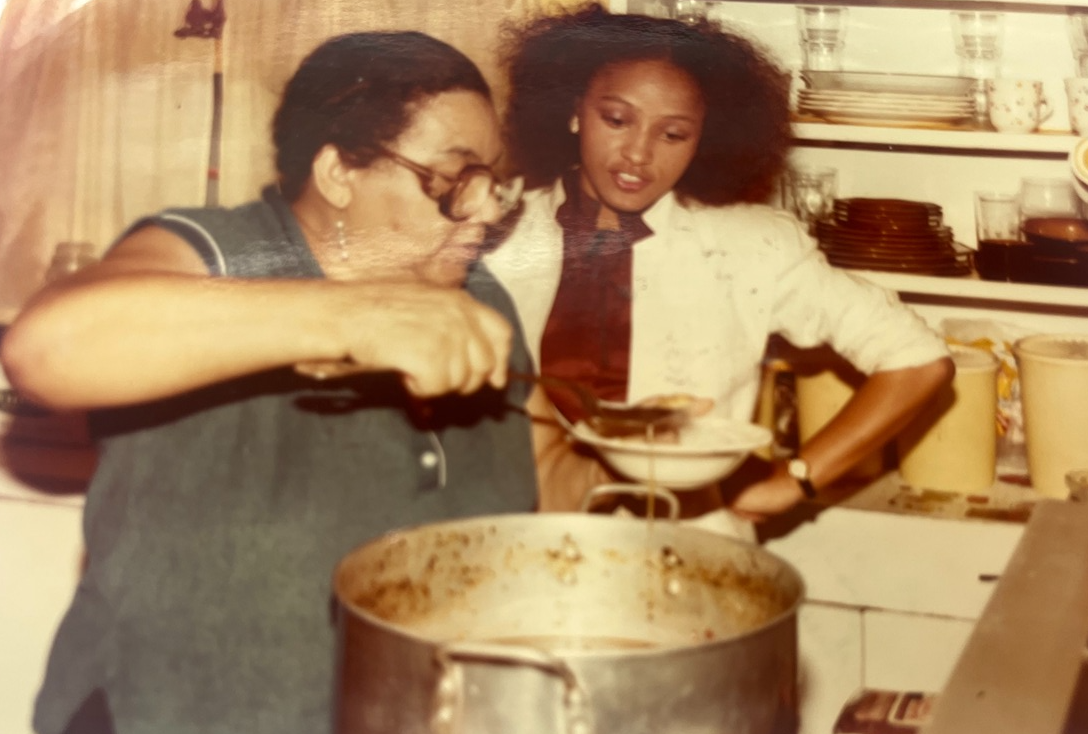
"Sharon was the concert queen. We went to every one—did not miss any," Jones recalls. "I go to as many as I can now in her honor."
When her mother passed away five years later, Jones was chanting over her body for over two hours when her mother suddenly took a final post-mortem breath and smiled, looking "very pleased." It solidified Jones' faith in Buddhism's spirituality.
Her father's death had a special impact on Jones. He passed away from complications related to heart surgery on November 27, 2005, the same day as Sharon. Jones saw it more than a coincidence.
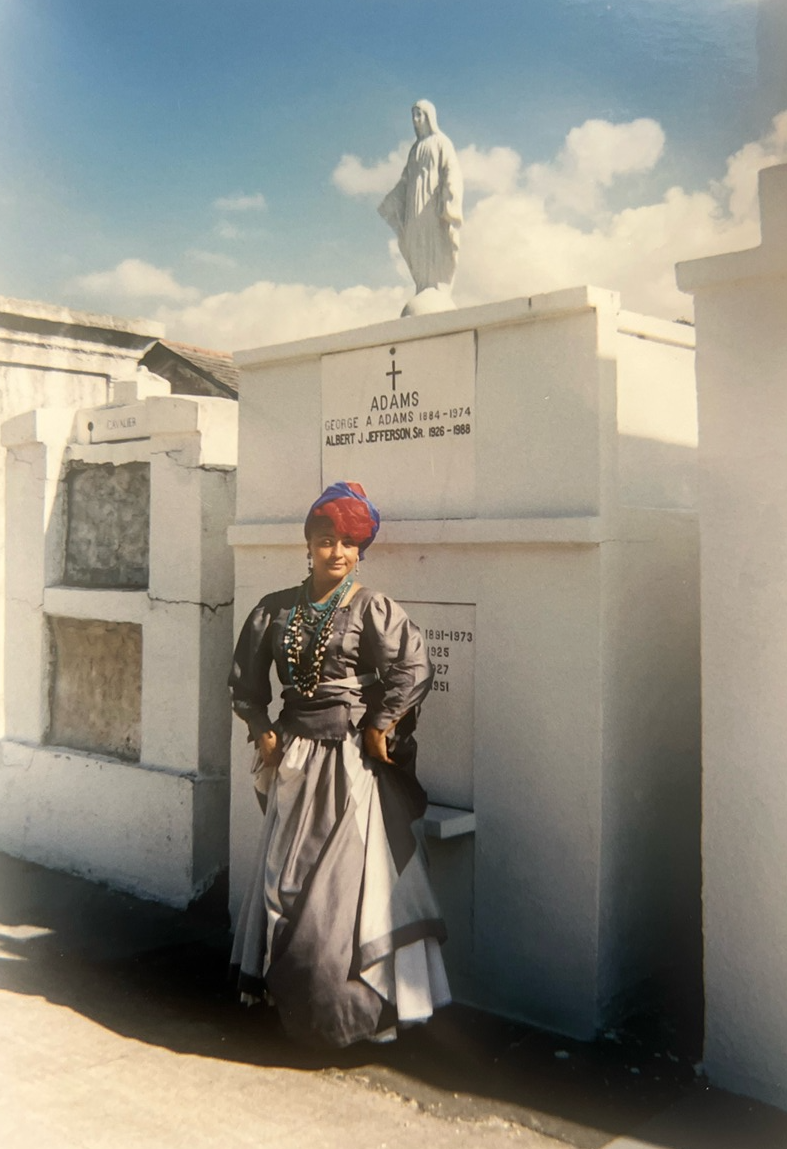
"He told me to go home and heal the people," she confides. Jones returned to the Crescent City and embraced the collective creativity of her family. Honoring her sister's love of live music, her mother's clothing designs, her father's music, and her own personal love of dance, "The Dancing Lady" emerged.
DREAM A LITTLE DREAM OF ME
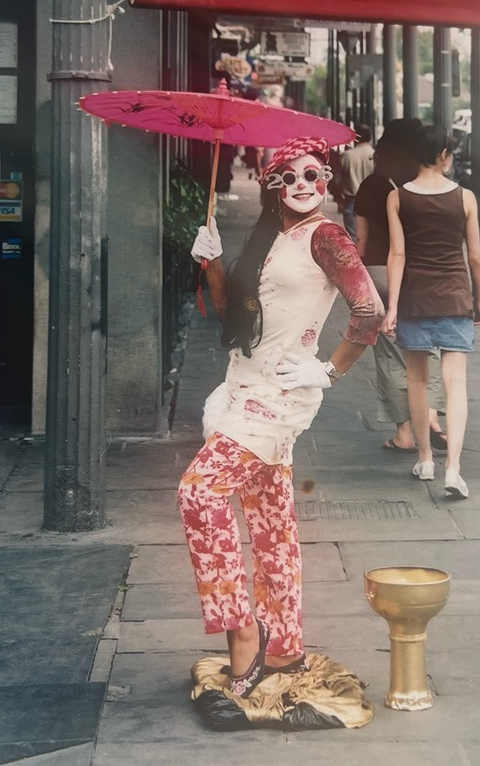
"It became a spiritual calling in 2007 when Alvin Batiste died," Jones states. "It was the first jazz funeral I ever danced in." She became a staple at culture bearer funerals in her community. "At Fats Domino's funeral 10 years later, experiencing death with all these families felt like I was fulfilling my dad's legacy by becoming part of the music industry but in a different way."
Jones followed her calling, winding up front and center at high-profile funerals, despite impossibly tight security and without ever being invited. In 2018, the late Marvin Gaye came to Jones in a dream, sending her to Aretha Franklin's funeral in Detroit, knowing she "can't let anything stop me." Although she did not gain entrance to the service, Jones remained standing at the church door for nine hours afterwards. Unexpectedly, Aretha Franklin's casket came out the door and Jones was situated to walk alongside Franklin's hearse all the way to the cemetery. At the following Jazz Fest, Jones met writer David Ritz, biographer of both Gaye and Franklin. It further solidified her belief in the interconnectedness central to all Buddhist teachings.
WITH A LITTLE HELP FROM MY FRIENDS
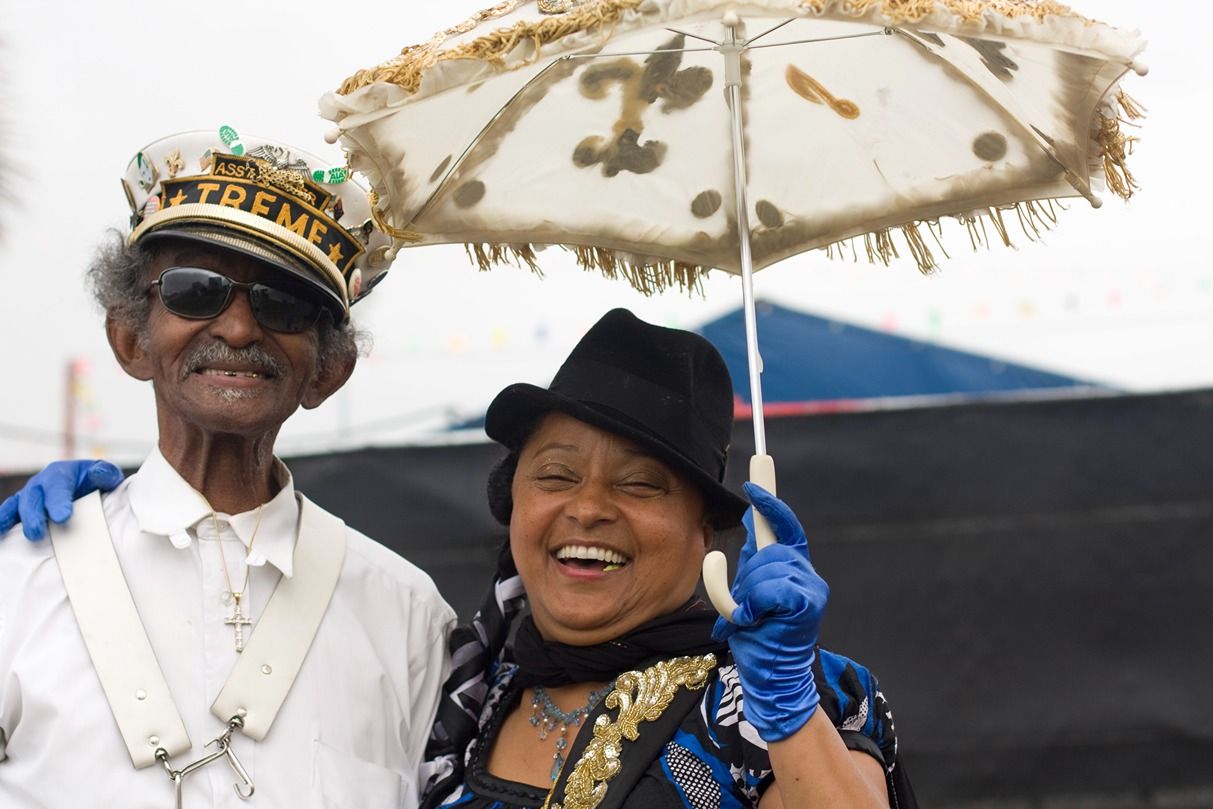
Festival goers will not miss Jennifer Jones in her multi-colored, multi-layered clothing and dancing at many of the city's spring festivals, especially French Quarter Fest and Jazz Fest.
"I used to have outfits with 10 times more layers head-to-toe but it would get so hot," Jones admits. "I simplified the design, so I can mix and match other clothes. And it's not as much to wash."
"I'm a teacher at heart," she states. By teaching students privately and continuing her father's mission by being a resource counseling musicians navigating business in the music industry, provides Jones the flexibility to cavort at random times with a Buddhist complacency of having "enough to get by."
"Music energizes me," she states. Whether she purchases her own tickets, or has them gifted to her, there she will be—likely with a second line of patrons following her every dance move. Contemplating who she would like to dance with, she just smiles and said, "Everybody."

